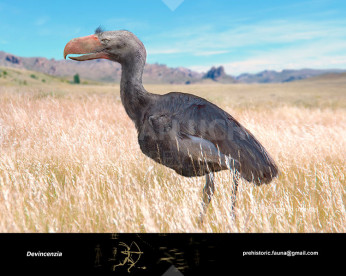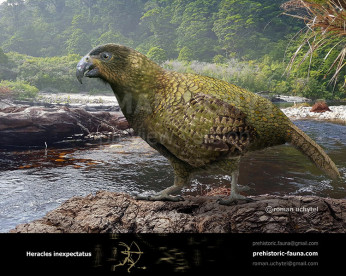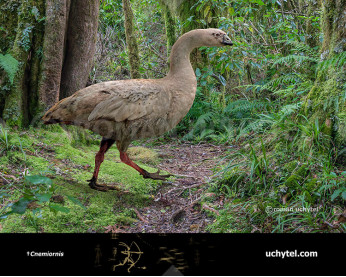Aptornis
416416Adzebill (†Aptornis (Owen, 1844))
Class: Aves
Order: Gruiformes
Family: †Aptornithidae
Time period: from the Miocene–Holocene epochs (The family was endemic to New Zealand)
Size: more than 80 cm in height, ~18 kg of weight
The adzebills, genus Aptornis, were two closely related bird species, the North Island adzebill, Aptornis otidiformis, and the South Island adzebill, Aptornis defossor, of the extinct family Aptornithidae. The family was endemic to New Zealand. A fossil species, Aptornis proasciarostratus, is known from the Miocene Saint Bathans Fauna.
In life the adzebills were massive gruiforms, about 80 cm in length with a weight of 18 kg, making them about the size of small moa (with which they were initially confused on their discovery) with enormous downward-curving and pointed bill, and strong legs. They were flightless and had extremely reduced wings, smaller than those of the dodo compared to the birds' overall size, and with a uniquely reduced carpometacarpus (Livezey, 1994).
The two species varied mostly in size with the North Island adzebill being the smaller species; their coloration in life is not known however.
The adzebills were never as widespread as the moa, but subjected to the same hunting pressure as these and other large birds by the settling Polynesians (and predation of eggs/hatchlings by accompanying kiore and dogs). They became extinct before the arrival of European explorers.
Adzebill (†Aptornis (Owen, 1844))
Class: Aves
Order: Gruiformes
Family: †Aptornithidae
Time period: from the Miocene–Holocene epochs (The family was endemic to New Zealand)
Size: more than 80 cm in height, ~18 kg of weight
The adzebills, genus Aptornis, were two closely related bird species, the North Island adzebill, Aptornis otidiformis, and the South Island adzebill, Aptornis defossor, of the extinct family Aptornithidae. The family was endemic to New Zealand. A fossil species, Aptornis proasciarostratus, is known from the Miocene Saint Bathans Fauna.
In life the adzebills were massive gruiforms, about 80 cm in length with a weight of 18 kg, making them about the size of small moa (with which they were initially confused on their discovery) with enormous downward-curving and pointed bill, and strong legs. They were flightless and had extremely reduced wings, smaller than those of the dodo compared to the birds' overall size, and with a uniquely reduced carpometacarpus (Livezey, 1994).
The two species varied mostly in size with the North Island adzebill being the smaller species; their coloration in life is not known however.
The adzebills were never as widespread as the moa, but subjected to the same hunting pressure as these and other large birds by the settling Polynesians (and predation of eggs/hatchlings by accompanying kiore and dogs). They became extinct before the arrival of European explorers.

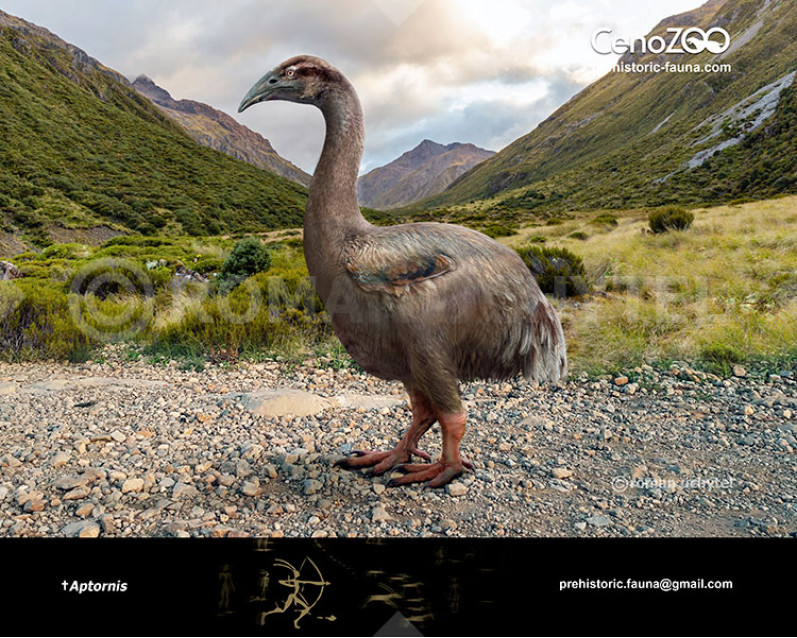
-797x638.jpg)
2-797x638.jpg)

-70x56.jpg)
2-70x56.jpg)
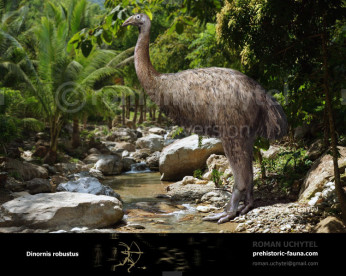
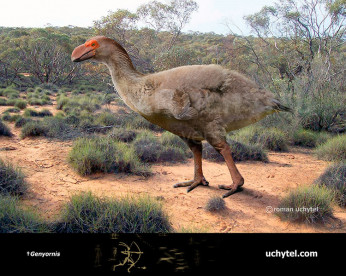
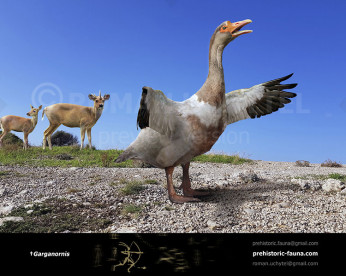
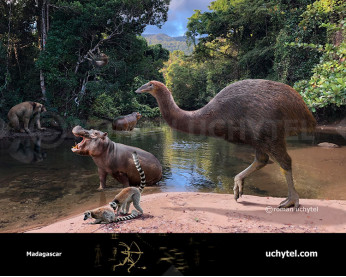
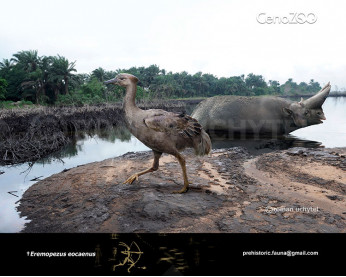
-346x277.jpg)
